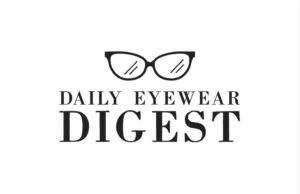Finding the right pair of glasses is not just about style but also about ensuring a comfortable fit. Ill-fitting glasses can cause discomfort, headaches, and even poor vision. This guide provides a comprehensive look into how you can find glasses that fit perfectly, complement your facial structure, and match your personal style.
Why Proper Fit is Essential for Glasses
1. Importance of Comfort and Style
Comfort is key when wearing glasses, especially if you wear them daily. Glasses that fit properly should rest comfortably on your nose without causing pressure or leaving marks. At the same time, the right glasses can complement your appearance and boost your confidence.
2. The Impact on Vision Clarity and Eye Health
Glasses that don’t fit well can distort your vision. If lenses aren’t properly aligned with your eyes, it can lead to issues like eye strain and even incorrect focus, which could exacerbate vision problems over time.
3. Avoiding Headaches and Strain
When glasses are too tight or sit unevenly on your face, you might experience tension headaches or neck pain due to the strain of trying to keep them in place. A proper fit eliminates these issues, ensuring that your glasses sit naturally on your face without causing discomfort.
4. Boosting Confidence and Functionality
Well-fitting glasses not only enhance your appearance but also stay in place during your daily activities, ensuring you remain comfortable and confident throughout the day.
Understanding the Anatomy of Eyeglasses
To select glasses that fit perfectly, it’s important to understand the different components of eyeglasses and how they impact fit and comfort.
1. Frame Components: Bridge, Temples, Lenses
- Bridge: The part that rests on your nose, playing a crucial role in weight distribution.
- Temples: The arms of the glasses that extend from the frame to rest behind your ears.
- Lenses: The prescription or non-prescription pieces that provide vision correction or style.
2. Materials: Metal, Acetate, Plastic, Titanium
Different materials offer varying levels of flexibility, durability, and comfort:
- Metal frames are lightweight and adjustable.
- Acetate provides a range of color options and durability.
- Plastic frames are often more affordable but less adjustable.
- Titanium is lightweight, durable, and hypoallergenic, ideal for sensitive skin.
3. Lens Shape and Types
Choosing the right lens type—such as single vision, bifocal, or progressive lenses—also affects the fit and functionality of your glasses. Thicker lenses might require larger frames to ensure comfort.
4. Frame Types: Full Rim, Half Rim, Rimless
- Full rim frames offer more durability and a defined look.
- Half rim glasses are lighter and more discreet.
- Rimless frames provide a minimalistic, nearly invisible appearance but might require frequent adjustments for a perfect fit.
Face Shape and Frame Selection
One of the most critical factors in finding glasses that fit perfectly is choosing frames that complement your face shape.
1. Identifying Your Face Shape
- Round: Soft curves with a rounded jawline.
- Square: A strong jawline and a broad forehead.
- Oval: Balanced proportions with a slightly curved chin.
- Heart-shaped: Wider forehead tapering to a narrow chin.
- Diamond-shaped: Narrow forehead and chin with broader cheekbones.
2. Best Frame Shapes for Each Face Type
- Round faces benefit from angular frames that add structure.
- Square faces look best with round or oval frames to soften angles.
- Oval faces can pull off almost any frame shape.
- Heart-shaped faces are complemented by bottom-heavy frames to balance a wide forehead.
- Diamond-shaped faces suit frames that highlight the eyes and soften the cheekbones.
3. Balancing Facial Proportions with Frame Size
It’s important to select frame sizes that are proportional to your facial features. Oversized frames on small faces may look overwhelming, while too-small frames on a larger face can seem ill-fitting.
4. Choosing Frames That Enhance Facial Features
Selecting frames that align with your features—like emphasizing high cheekbones or balancing a broad forehead—helps you find glasses that fit both in terms of comfort and aesthetics.

